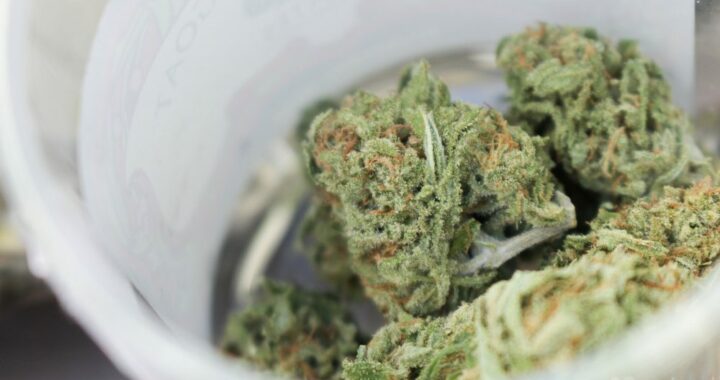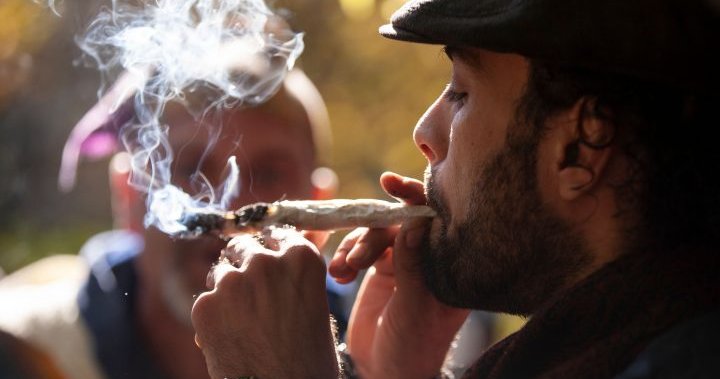Q&A with Eric Hollander: Cannabis treatments for autism | Spectrum
5 min read
Eric Hollander
Professor, Albert Einstein College of Medicine
Cannabis is still illegal at the federal level in the United States, but most states have legalized it for medical use – including 14 states that have approved cannabis for autism. As prohibition slowly lifts, scientists and families in the autism community are increasingly turning to cannabis and its ingredients to help alleviate autism-related difficulties such as seizures and irritability.
Many people with autism and their families report positive results and few, if any, side effects, but clinical trials are still in their infancy.
Spectrum spoke to Eric Hollander, Professor of Psychiatry and Behavioral Sciences at Albert Einstein College of Medicine in New York City, about the current state of cannabis research for autism and why cannabinoids appear to help reduce irritability and symptoms of coexisting conditions like epilepsy for autistic people.
Spectrum: Why is there interest in cannabis for autism?
Eric Hollander: There are two drugs that are approved by the Food and Drug Administration (FDA) for children with autism who have significant disruptive behavior or irritability: Risperdal (risperidone) and Abilify (aripiprazole). These drugs are helpful in reducing aggression, self-harm, and autistic meltdown.
The problem is its side effects. Children and adults can sometimes gain weight, putting them at risk for metabolic problems such as type 2 diabetes. Other common side effects are motor problems and sedation. And not everyone responds to these treatments, so it’s good to come up with alternatives.
Cannabinoids, especially “phytocannabinoids” derived from cannabis plants, can have fewer side effects than risperidone or aripiprazole. These compounds include THC [tetrahydrocannabinol, the psychoactive ingredient in marijuana], CBD [cannabidiol] and CBDV [cannabidivarin]. In contrast, the “endocannabinoids” are naturally occurring compounds in the human body. These include anandamide and 2-arachidonoylglycerol, which bind to cannabinoid 1 (CB1) and cannabinoid 2 (CB2) receptors in the brain and in the immune system, where they can function as neuromodulators. The phytocannabinoid THC can also bind to these receptors and influences the second messenger systems such as the MAPK and mTOR signaling pathways.
These circulating endocannabinoids can be affected by all kinds of external stimuli. Stress can increase circulating endocannabinoids, as can infection or inflammation. This can have a number of effects that can affect mood, anxiety, and behavior. Studies comparing autistic individuals with age- and sex-matched controls show changes in these circulating endocannabinoid levels.
S: What does cannabis treatments seem to do for people?
EH: Cannabis is approved in some states for the treatment of certain medical conditions such as pain syndromes, gastroenterological problems, and some neurological problems. In some states, it is indicated for certain psychiatric syndromes, such as post-traumatic stress disorder.
However, for the most part, very little is known about the medicinal uses of cannabis. Legislation is way ahead of the knowledge base and controlled clinical trials of these types of compounds for various diseases. There is a need for further studies, both on efficacy and safety.
There is only one CBD supplement, Epidiolex, that has been approved by the FDA for three different indications. These are rare genetic forms of epilepsy: Dravet Syndrome, Lennox-Gastaut Syndrome, and Tuberous Sclerosis Complex.
S: How could these treatments work?
EH: These cannabinoid compounds appear to work in two different ways. One is that they can have quite potent effects in regulating the arousal / inhibition balance of the brain or the E / I balance. Sometimes the brain may have too much arousal or a relative deficit of inhibition. When you have too much cortical arousal and too little inhibition, it can be expressed in seizures – for example, epilepsy. It can also be expressed as disruptive episodes such as meltowns, aggression, or self-harm, or as compulsive or repetitive behavior.
Cannabinoid compounds, including CBD and CBDV, a compound we have carefully studied, appear to increase inhibition and decrease arousal, so they restore the E / I balance.
Another mechanism of action of cannabinoids is the regulation of immune-inflammatory signaling pathways.
There are several compounds in cannabis and we want to understand the effects of these different phytocannabinoids. To a certain extent, these cannabinoids can have reciprocal effects. For example, THC can have different effects than CBD or CBDV. THC binds directly to the CB1 and CB2 receptors, while CBDV and CBD don’t – they bind to different receptors.
S: What evidence do we have that these compounds could work in autism?
EH: In animal models of autism, CBD and CBDV have actually shown benefits in reducing seizures, improving cognition, reducing appetite, improving social functioning, and reducing repetitive behaviors. This sparked our interest in examining these compounds in human autism studies.
We are currently conducting studies comparing CBDV to placebo in children and adolescents with autism who have high levels of irritability or disruptive behavior – the subpopulation that could normally be treated with drugs such as risperidone or aripiprazole. We are studying this compound to see if it helps with irritability measures without metabolic side effects. We also look to see if we can improve both repetitive behaviors and rigidity measures as well as social communication measures.
We’re also doing another study in people with a rare genetic form of autism called Prader-Willi syndrome. People with Prader-Willi syndrome have compulsive eating behaviors. In addition, they have strong rigidity and repetitive behavior. And so, in these children and young adults with Prader-Willi syndrome, we also compare CBDV to placebo to see if we can help with irritability, disruptive behavior, or compulsive eating, as well as social communication problems.
S: What are the barriers to bringing cannabis treatments for autism into the mainstream?
EH: There are many obstacles and regulatory challenges. You must be able to provide the FDA with an investigator brochure that describes detailed information about the manufacturing process and the purity and stability of the compound. You must get human approval from an institutional review board.
If compounds contain THC, you’ll need to get approval from the Drug Enforcement Administration and state regulators such as the Bureau of Narcotic Enforcement in the case of New York.
You also need to have good clinical trial outcome measures that are reliable and sensitive to change. This is a big topic in studies of autism, especially for outcomes measurements for repetitive behavior and social communication. There is definitely a need to develop biomarkers that are closer to the underlying genetic or molecular mechanisms than some of the behavioral parameters that are more distant or distant.
S: What should individuals and clinicians consider when considering trying cannabis for autism?
EH: It’s important to understand the potential risks and benefits of such an approach. What are the potential benefits? Then what is the evidence base to demonstrate potential benefits? Compared to what potential risks? I think it is very important that families and individuals can also communicate openly with their health team. And this can be an iterative process.








 Protected by Patchstack
Protected by Patchstack